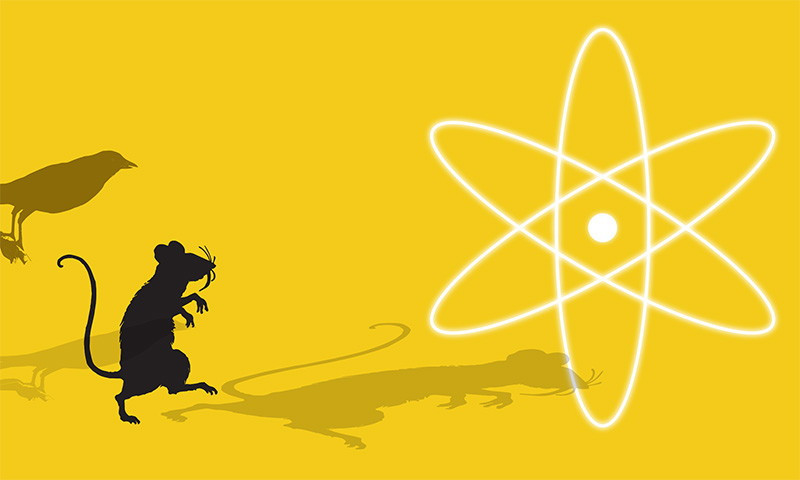More than just ‘pests’
Crows and rats display remarkable intelligence
The amount of inconsistency in opinion on various species of common wildlife never ceases to amaze.
When asked what one thinks of puppies or kittens for instance, one might typically respond with, “I love them,” “They’re so precious,” or nearly any other synonym for “adorable” one can think of.
However, ask the same person about the common rat or crow and you would be more likely to receive such adjectives as “disgusting” or “filthy.”
One of the most popular terms you might hear is “pest.”
The word “pest” is typically defined as something annoying or troublesome, so it’s easy to see how any number of negative connotations have come to be nearly synonymous with these sorts of creatures over the years.
The negative bias surrounding rats, crows and the like is so strong that just about anyone could miss the heightened intellect, ingenuity and numerous physiological marvels and nuances that make these animals so much more than mere “pests.”
One five-year study of a specific group of crows near Seattle proves that humans aren’t the only ones capable of spreading intelligence about the enemy’s activities - crows are not only smart enough to easily identify a threat, they are able to differentiate between individual humans and determine who has personally disrupted them in the past.
The experiment in Seattle began with researchers wearing identical masks trapping and banding a small flock of crows before releasing them back into various sites in and around the city.
After waiting for a couple of weeks and revisiting the same sites wearing the same masks, 26 per cent of all crows encountered on the researchers’ routes clearly recognized and “scolded” (a harsh alarm call commonly utilized by crows to identify and warn others of an impending threat) those adorned with the mask.
After approximately 15 months, the researchers would travel the same route wearing the same mask to notice an increase of scolding to 30.4 per cent, a percentage that would more than double to approximately 66 per cent after two years’ time.
This unexpectedly discerning and specific method of threat identification is a fine example of the crow’s adaptability to an urban environment potentially full of dangers to their species.
However, crows certainly aren’t the only species to display mental awareness.
A study conducted in 2007 by researchers at the University of Georgia concluded that the common rat is capable of metacognition - the ability to reason or think about one’s own thinking processes, a trait formerly thought to be present only in primate species.
The study was based on a test in which the rats were given a reward for determining whether a signal was “short” or “long.”
The correct answer would lead to a sizeable food reward, while the wrong answer would lead to nothing.
A third option also existed for the rat to decline the test and receive a much smaller food reward anyway.
“ One five-year study of a specific group of crows near Seattle proves that humans aren’t the only ones capable of spreading intelligence about the enemy’s activities.
The test began easily with the signals being on the extreme ends of “short” or “long,” and most rats would be able to identify the length of the auditory signal provided relatively quickly.
As the signals became closer to a vague mid-range in between the two extremes, the rats became confused and thus faced the choice of whether to risk answering wrong and receiving no reward, or opting out of the test altogether in order to be guaranteed a smaller prize.
According to one researcher, as the tests grew more difficult the “decline” option was chosen more and more frequently, showing the rats seemed to know when they could not determine the correct answer.
Test results such as this are overlooked constantly in favour of predisposed negative ideas many associate with psychologically fascinating creatures such as these.
Far from being dismissed as “useless,” “disgusting” or “vermin,” animals capable of such advanced thought processes as metacognition and the specific identification of known human threats ought to be observed and studied at even greater length.
By bringing these accomplishments to the forefront of discussions regarding these species, we have the potential to not only prompt further investigation into their evolutionary marvels, but perhaps even dispel a few misconceptions and give the common passerby a chance to look twice at crows and rats before immediately dismissing these remarkable creatures as nothing but mere “pests.”
Seamus Pattison is a first-year student at the University of Winnipeg and host of the Monday lunch hour show from noon to 1 p.m. on CKUW 95.9FM.
Published in Volume 67, Number 9 of The Uniter (October 31, 2012)








